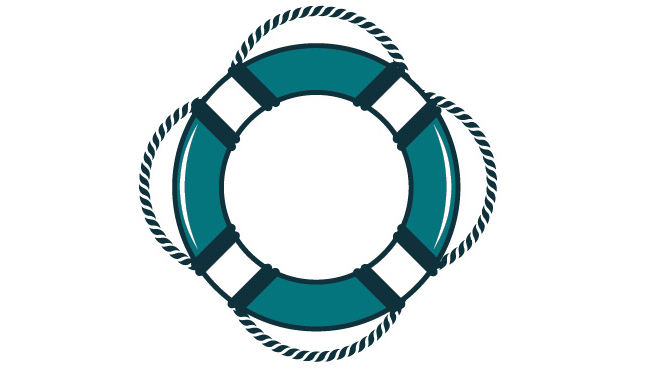In the drink
Student pilots get a lot of practice in engine-out procedures and gliding to simulated forced landing sites. There’s nothing wrong with that, even though engine failures and stoppages are rare. But in virtually all forced-landing practice scenarios, the assumption is that the landing will happen on land. Ditchings—forced landings on water—never seem to appear on any pilot training syllabus; little is written about the subject; and the FAA doesn’t require the subject of ditching as an element in any pilot training course. Sure, a couple of pages on the subject are in the Aeronautical Information Manual, but those deal almost exclusively with techniques for the moment of touchdown—not the procedures you need to know before and after the airplane is in the water.
If an overwater routing is on your flight plan, your preflight planning should address several essential items. Do you really need to cross a large body of water, when flying around it would expose you to less risk? Are there islands along the route? If so, then you should fly near them should an engine problem crop up. How high will you fly? The higher the better, so that your gliding range hopefully extends to land. Do you have life vests, signaling devices, and a raft aboard? These, too, are musts.
Let’s take an imaginary overwater flight to build up your ditching savvy. You’ll fly as high as practical, and have the emergency frequency—121.5 MHz—plugged into your com radio, ready for immediate use in case of trouble. Stay in touch with air traffic control or VFR flight following (formally known as VFR traffic advisories) as you fly. If something happens, you want to devote your full attention to ditching preparations, not fumbling for frequencies. Ships, the U.S. Navy and Coast Guard, and police and fire departments all listen on 121.5 in case there’s any emergency. Have a marine VHF radio? Take it along and tune it to channel 16—another frequency that ships guard. By the way, do you see any ships as you fly? Fly near them. Sailors are supposed to stand watch; if you ditch near a ship your pickup should be quicker.
You and your passengers will be buckled in and wearing your vests during the whole flight, but they’ll be uninflated. Your raft should be located near you, or with a passenger tasked with its possession. It should be a high-quality raft with lots of freeboard (when inflated, the distance between the water’s surface and the upper edge of the raft’s gunwales), a bailer, and a cover. You might also consider wrapping the raft’s painter line (the line that fires the raft’s inflation bottle) around a seat back so that it will stay near the airplane after landing.
Now let’s say the engine quits and running the checklist doesn’t restore power. Fly best glide speed, make your Mayday calls, put the transponder on code 7700, and prepare to land on the water. Pop open any doors, because the coming impact may deform the cabin and prevent the doors from opening.
Right before the landing, have any passengers get in the brace position (head down, arms crossed over the chest, and hands grasping the shoulder belts—if any). As pilot, you can’t properly brace, but you can move your torso forward so that the shoulder harness’ inertial reels lock. Fly the airplane on, but don’t wrap your thumbs around the control yoke. The sudden stop can break your thumbs and/or wrists.
Let’s hope there aren’t any big waves. Ideally, you should land the airplane (gear up, in retractables) on the crest of any waves at minimum airspeed and a very shallow descent rate—no more than 200 fpm. If you land on a wave crest, the airplane should float without much fuss. You do not want to land into the face of a wave, or in a trough between waves. Waves will break over the airplane and you’ll be submerged.
When you hit the surface, things may happen fast. The nose wheel of a fixed-gear single may dig in and flip the airplane. Or the airplane may skip, stall, and plunge in headfirst. The airplane may suddenly sink. This is why you have to develop a somatic memory for the location of the doors and door handles.
Once the motion stops, open the door, get yourself and any passengers out, and bring the raft with you. Take one huge breath before leaving a cabin filling with water, then move with a purpose. When outside, inflate the life vests, followed by the raft. Keep the raft away from the airplane. Jagged metal may puncture it. Now it’s time to climb in the raft and wait for your rescue. Signal mirrors work well once a rescue airplane shows up.
Escaping after a ditching takes practice. Survival Systems USA of Groton, Connecticut, offers a one-day class for $800. It’s worth it to get a taste of the worst ditching situations. The FAA may not require any ditching training, but after taking one of these courses you’ll wonder why not.

 Ditching, step-by-step
Ditching, step-by-step

